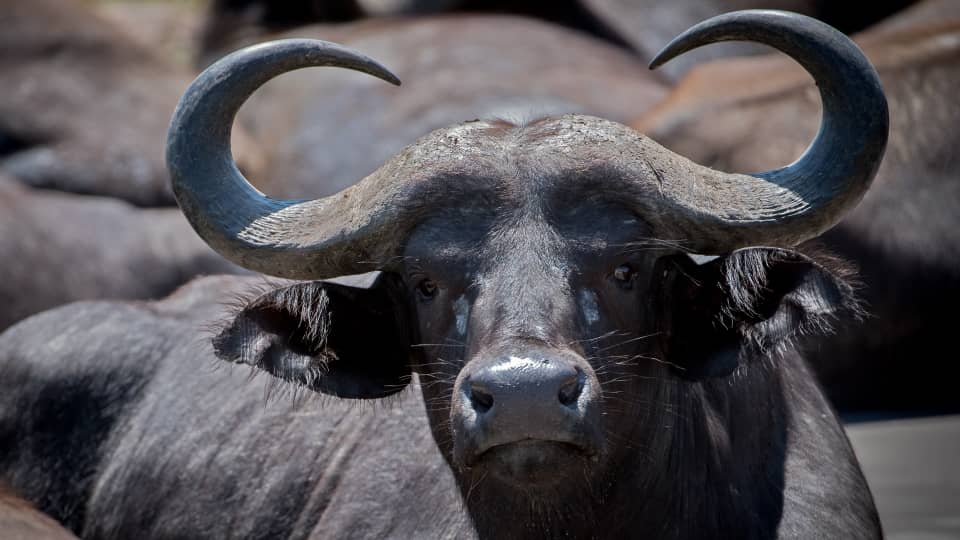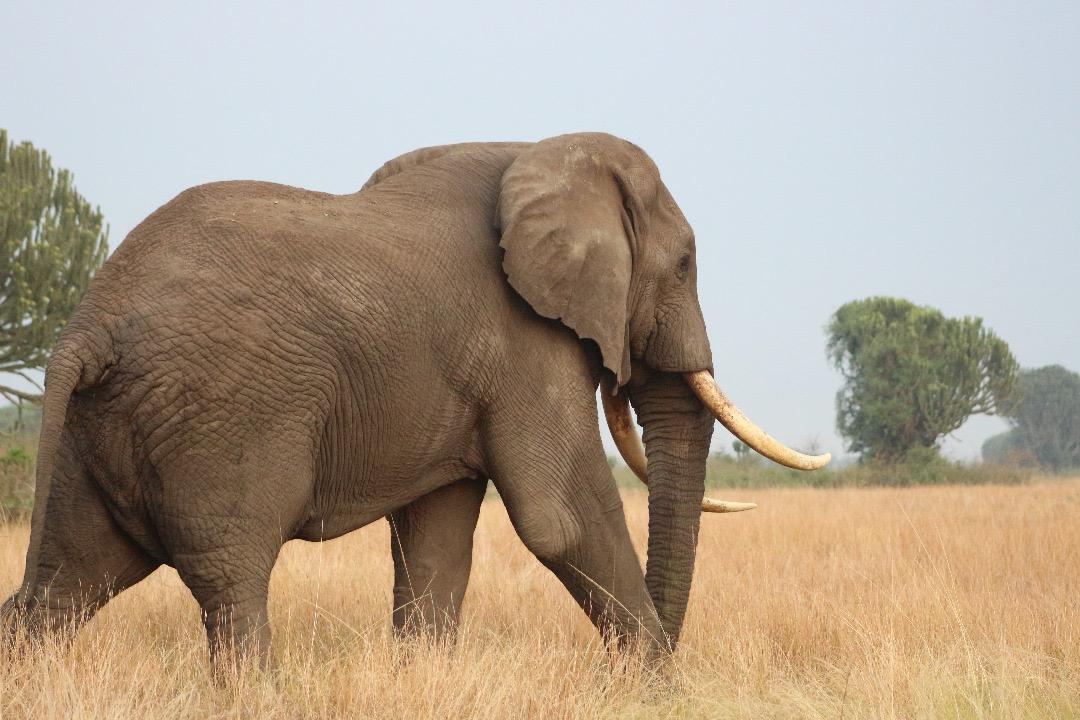Queen Elizabeth National Park: Uganda’s Jewel of the Savannah
Nestled in the western region of Uganda, Queen Elizabeth National Park is a treasure trove of natural beauty and wildlife diversity. Spanning approximately 1,978 square kilometers, the park is renowned for its stunning landscapes, rich biodiversity, and exceptional safari experiences. From lush savannahs and dense forests to scenic lakes and wetlands, Queen Elizabeth offers an unparalleled adventure for nature enthusiasts and wildlife lovers alike. As Uganda’s most popular national park, it promises a captivating journey into Africa’s wilderness.
The Majestic Savannah: Queen Elizabeth’s Landscapes
Queen Elizabeth National Park boasts a diverse array of landscapes that provide a picturesque backdrop for wildlife viewing. The park’s savannahs are characterized by rolling grasslands, dotted with acacia trees and scattered with small water bodies. These open plains offer excellent opportunities for game drives, allowing visitors to witness the park’s abundant wildlife in their natural habitat. The park’s southern sector, known as the Ishasha region, is famous for its tree-climbing lions, a rare and fascinating sight. In contrast, the northern sector features the scenic Mweya Peninsula, where the Kazinga Channel flows through a broad expanse of wetlands. This diverse topography creates a rich tapestry of ecosystems that support a wide variety of flora and fauna.
The Kazinga Channel: A Waterway of Wildlife
One of Queen Elizabeth National Park’s standout features is the Kazinga Channel, a natural waterway that connects Lake Edward and Lake George. The channel serves as a vital lifeline for wildlife, attracting a diverse array of animals and birds. Boat cruises along the Kazinga Channel offer a unique perspective on the park’s wildlife, providing close-up views of hippos, crocodiles, and a plethora of bird species. The channel’s banks are lined with lush vegetation, creating an ideal habitat for numerous waterfowl and aquatic species. The boat cruises are renowned for their excellent birdwatching opportunities, with sightings of species such as the African fish eagle, saddle-billed stork, and kingfisher. The serene setting and abundant wildlife make the Kazinga Channel a highlight of any visit to the park.
Game Drives: Discovering Queen Elizabeth’s Wildlife
Game drives are a quintessential part of the safari experience in Queen Elizabeth National Park. The park’s extensive network of well-maintained tracks allows for comprehensive exploration of its varied habitats. During these drives, visitors can encounter a wide range of wildlife, including elephants, buffaloes, giraffes, and various antelope species. The park’s rich biodiversity also includes predators such as lions and leopards, which can often be spotted resting in the shade or patrolling their territories. In the Ishasha region, game drives offer the chance to see the park’s famous tree-climbing lions, which are known for their unusual habit of lounging in the branches of fig trees. The variety of landscapes and wildlife encounters make game drives in Queen Elizabeth an exhilarating and rewarding experience.
Chimpanzee Tracking: A Primate Adventure
For those seeking a more intimate wildlife experience, chimpanzee tracking in Queen Elizabeth National Park provides a unique opportunity to observe our closest relatives in the wild. The park’s Kyambura Gorge, also known as the “Valley of Apes,” is home to a habituated group of chimpanzees. Guided treks through the lush gorge lead to encounters with these intelligent and social primates. The chimpanzee tracking experience offers insights into their behaviors, communication, and social interactions, providing a fascinating glimpse into their daily lives. The dense forest and rugged terrain of the gorge add an element of adventure to the trek, making it a memorable and immersive wildlife experience.
Birdwatching Paradise: A Haven for Avian Enthusiasts
Queen Elizabeth National Park is a birdwatcher’s paradise, with over 600 bird species recorded within its boundaries. The park’s diverse habitats, including savannahs, wetlands, and forests, provide a variety of environments for different bird species. Notable birdwatching highlights include the chance to see the rare shoebill stork in the wetlands and the vibrant blue-cheeked bee-eater in the savannahs. The park’s extensive birdlife also includes raptors, such as the African fish eagle and the martial eagle, as well as a multitude of waterfowl and songbirds. Birdwatching tours and guided walks offer specialized insights into the park’s avian inhabitants, making Queen Elizabeth a top destination for bird enthusiasts.
Cultural Encounters: Connecting with Local Communities
In addition to its wildlife and natural beauty, Queen Elizabeth National Park provides opportunities for cultural engagement with the local communities. The park is surrounded by several traditional villages where visitors can experience the rich cultural heritage of the region. Cultural tours often include visits to local markets, traditional craft centers, and community projects. These encounters offer insights into the customs, traditions, and daily lives of the local people, highlighting the relationship between the park’s natural resources and the surrounding communities. Engaging with local cultures enhances the overall safari experience and supports sustainable development initiatives in the region.
Comparative Adventure Experiences: Uganda and Beyond
While Queen Elizabeth National Park offers a wealth of unique experiences, Uganda is home to several other iconic national parks that provide diverse adventure opportunities. Each park presents its own distinctive landscapes and wildlife encounters, contributing to Uganda’s reputation as a premier safari destination:
- Murchison Falls National Park: Known for its dramatic Murchison Falls and the thrilling boat cruises along the Nile River, Murchison Falls offers a spectacular combination of wildlife viewing and river-based adventures. The park’s diverse habitats and abundant wildlife make it a top destination for safari enthusiasts.
- Bwindi Impenetrable Forest National Park: Famous for its mountain gorilla trekking experiences, Bwindi provides an unparalleled opportunity to observe critically endangered gorillas in their natural habitat. The park’s dense forests and rich biodiversity add to the allure of this extraordinary adventure.
- Kibale Forest National Park: Renowned for its chimpanzee tracking and diverse primate population, Kibale offers a unique opportunity to interact with our closest relatives and explore lush rainforests. The park’s rich avifauna and scenic nature walks enhance the overall experience.
- Rwanda’s Volcanoes National Park: Neighboring Uganda, Volcanoes National Park offers exceptional gorilla trekking experiences and opportunities to track golden monkeys. The park’s volcanic landscapes and stunning views add an extra dimension to the adventure.
- Tanzania’s Serengeti National Park: Famous for the Great Migration and vast savannahs, Serengeti is a premier destination for game viewing and wildlife photography. The annual migration of wildebeest and zebras provides dramatic wildlife spectacles.
- Kenya’s Masai Mara National Reserve: Known for its high density of big game and the annual migration of wildebeest and zebras, the Masai Mara offers excellent game viewing and cultural experiences with the Maasai people.
Conservation and Community Impact: Protecting Queen Elizabeth
Conservation is a central focus of Queen Elizabeth National Park, with ongoing efforts to protect its diverse ecosystems and wildlife. The park’s management works closely with local communities and conservation organizations to promote sustainable practices and support wildlife protection initiatives. Anti-poaching measures, habitat restoration projects, and community education programs are integral to preserving the park’s biodiversity and ensuring the long-term viability of its wildlife populations. Visitors to Queen Elizabeth contribute to these efforts through their participation in park activities, such as game drives and boat cruises. Their support helps fund conservation projects and fosters a greater appreciation for the park’s natural heritage.
Planning Your Visit: Essential Tips and Recommendations
When planning a visit to Queen Elizabeth National Park, it is important to consider several practical aspects to ensure a rewarding experience. Booking accommodations and park permits in advance is advisable, as the park can be busy during peak seasons. Visitors should also prepare for varying weather conditions, as the park’s climate can be unpredictable. Wearing comfortable clothing, sturdy hiking boots, and carrying essential gear such as binoculars and a camera are recommended for a successful safari. Additionally, adhering to park regulations and guidelines ensures a respectful and responsible wildlife encounter.
Conclusion: Embrace the Wonders of Queen Elizabeth
Queen Elizabeth National Park stands as a testament to Uganda’s rich natural heritage and offers a wealth of adventure experiences for travelers seeking to explore its stunning landscapes and diverse wildlife. From exhilarating game drives and serene boat cruises to immersive chimpanzee tracking and cultural encounters, the park provides a multifaceted safari experience that captivates and inspires. As part of the broader tapestry of Africa’s iconic national parks, Queen Elizabeth exemplifies the continent’s unparalleled splendor and the vital importance of conservation efforts in preserving its precious ecosystems for future generations.



